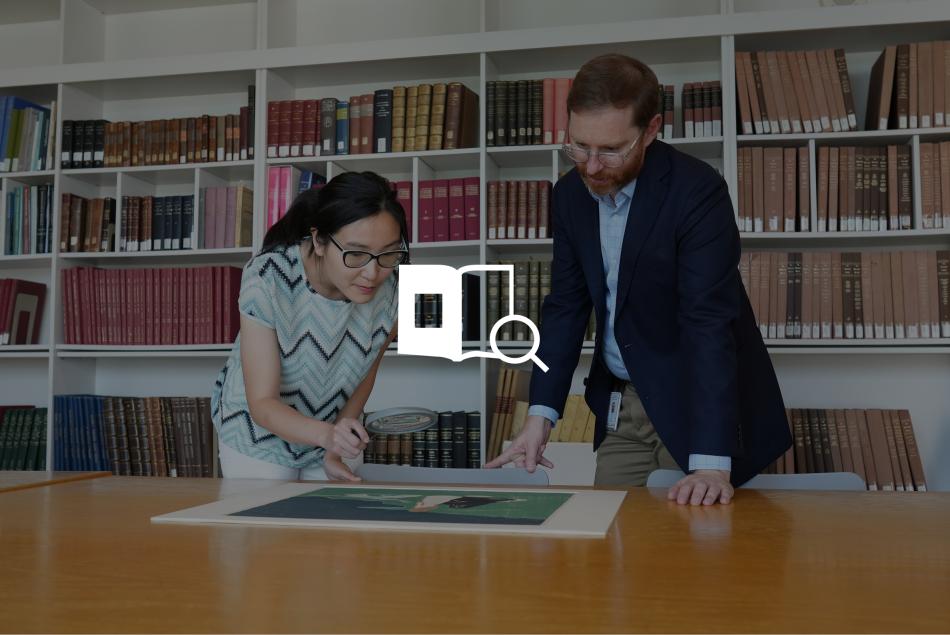The Levite at Gibeah
early 1640s
Painter, Dutch, 1621 - 1674

The subject of this painting is taken from the Old Testament book of Judges. After the Levite had married a woman of inferior status from Bethlehem, they quarreled and the concubine left him and returned to her father’s house. The Levite soon followed and retrieved her. On their journey home, they unsuccessfully searched the town of Gibeah for a place to sleep until finally a field laborer offered the couple lodging in his house. This is the moment depicted by Gerbrand van den Eeckhout, who painted at least three versions of this scene.
Later that evening, according to the biblical account, a few men surrounded the laborer’s house threatening to harm the Levite. To placate the aggressors, the host instead offered them his own daughter and the concubine. In the end, only the concubine was pushed out the door and, after being raped repeatedly, she died of her injuries on the laborer’s doorstep. The next day, the Levite left Gibeah with the dead woman’s body strapped onto his donkey. Once home, the Levite cut the corpse into twelve pieces and sent one piece to each tribe of Israel, triggering a horrendous cycle of revenge killings. Despite the horrible aftermath of the laborer’s initial act of hospitality, Van den Eeckhout chose to focus on the moment when the laborer, acting as a Good Samaritan, invited the travelers into his home.
Van den Eeckhout was one of Rembrandt’s most talented and versatile pupils, and was probably a member of the master’s workshop from about 1635 to 1640 or 1641. His oeuvre includes history paintings, landscapes, portraits, and genre scenes, as well as etchings, drawings, designs for metal objects, and book illustrations. Although Van den Eeckhout achieved Rembrandtesque effects through a powerful use of light and shade, his manner of painting was smoother and more fluid than that of his teacher.
Artwork overview
-
Medium
oil on canvas
-
Credit Line
-
Dimensions
overall: 96.5 x 121.9 cm (38 x 48 in.)
framed: 119.4 x 144.1 x 5.7 cm (47 x 56 3/4 x 2 1/4 in.) -
Accession
1996.99.1
More About this Artwork
Artwork history & notes
Provenance
Art market, New York, 1960s;[1] purchased by Emile E. Wolf [1899-1996], New York; gift (partial and promised) 1996 to NGA; gift completed 2000.
[1] In a letter to Arthur Wheelock (15 January 1987, in NGA curatorial files), Emile E. Wolf writes that “Park Bernet sold it as anonynme [sic],” which might indicate he purchased the painting at an auction. Many Parke-Bernet sale catalogues for the 1960s have been checked, but as yet an auction that included the painting has not been identified.
Associated Names
Exhibition History
1969
Rembrandt and His Pupils, Montreal Museum of Fine Arts; Art Gallery of Ontario, Toronto, 1969, no. 48.
1982
The Discovery of the Everyday: Seventeenth-Century Dutch Paintings from the Wolf Collection, Chrysler Museum, Norfolk; Museum of Art, Rhode Island School of Design, Providence; Tampa Museum, 1982-1983, no. 11, repro.
Bibliography
1969
Stechow, Wolfgang. "Some Observations on Rembrandt and Lastman." Oud Holland 84, no. 1-4 (1969): 156, fig. 9.
Montreal Museum of Fine Art, and Art Gallery of Ontario. Rembrandt and his Pupils. Exh. cat. Montreal Museum of Fine Art; Art Gallery of Ontario, Toronto. Montreal, 1969: 84, no. 48.
Held, Julius S. "Die Ausstellung 'Rembrandt and his Pupils' in Montreal und Toronto." Pantheon 27 (September-October 1969): 386-395, fig. 2.
Rifkin, Benjamin A. "Rembrandt and His Circle, Part II." Art News 68 (6 October 1969): 33.
Rifkin, Benjamin A. "Rembrandt and His Circle, Part III." Art News (7 November 1969): 89.
1982
Robinson, Franklin W. The Discovery of the everyday: seventeenth century Dutch paintings from the Wolf Collection. Exh. cat. Chrysler Museum, Norfolk, Virginia; Tampa Museum; Museum of Art, Rhode Island School of Design. Norfolk, 1982: no. 11, color repro.
1983
Sumowski, Werner. Gemälde der Rembrandt-Schüler in vier Bänden. 6 vols. Landau, 1983: 2:732, 788, no. 425, repro.
1987
Manuth, Volker. "The Levite and His Concubine." Hoogsteder-Naumann Mercury 6 (1987): 18.
Wikidata ID
Q20177177




